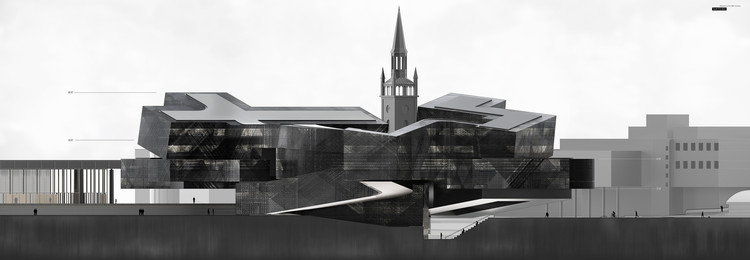
SCI-Arc's B.Arch thesis students recently presented their final thesis projects at the 2018 B.Arch Thesis Reviews, aimed at fostering discussion, debate, and mapping out new directions for architecture. The culmination of the school's five-year Bachelor of Architecture (B.Arch) curriculum, the year-long thesis program challenges the next generation of designers to take clear positions, form new perspectives regarding existing challenges, and conceive solutions for issues that architects will face in the future.
On April 20-21students presented projects to this year’s special thesis advisor, Los Angeles–based architect Neil M. Denari; Tom Wiscombe, the Chair of the B.Arch program; advisors including B.Arch Thesis Coordinator Marcelyn Gow, Ferda Kolatan, Marcelo Spina, Peter Testa, M. Casey Rehm, and Keith Marks; and other SCI-Arc faculty members.
Concluding the weekend’s events, several students were recognized at a special award ceremony. Two students—Isabela De Sousa and Karim Saleh—were awarded the prestigious Blythe and Thom Mayne Undergraduate Thesis Prize, and Thesis Merit Award winners were Rishab Jain, Brandon Lim, Luciano Menghini, Andreina Pepe, Andrea Sanchez, and Sara Segura.










